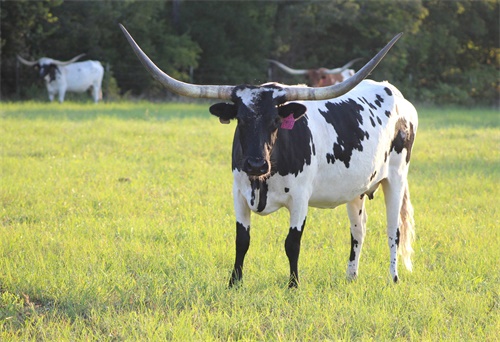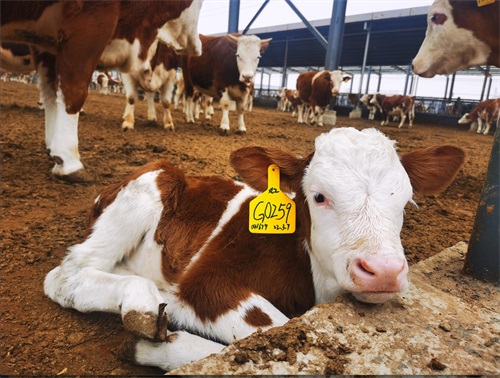If you’ve spent any time around livestock farms, equine clinics, or mixed animal practices, you’ve probably heard a lot more about Veterinary ultrasound lately. And for good reason—it’s become one of the most trusted tools in animal diagnostics, especially for reproductive health and internal organ assessments.
But whether you're a new vet looking to build your toolkit, or a farmer curious about investing in your own unit for basic breeding management, the big question remains: How much does a quality veterinary ultrasound machine actually cost?
Let’s break that down in plain English, just like you’d chat about it over a cup of coffee with another vet or farmer. We'll explore what affects the pricing, the difference between entry-level and advanced systems, and which types make the most sense depending on your practice.

What Affects the Cost of a Veterinary Ultrasound Machine?
There’s no one-size-fits-all price when it comes to these devices. Costs can range anywhere from $1,500 to over $30,000, depending on several key factors:
Image quality & probe resolution
The clearer the image, the higher the cost. Machines with high-frequency, multi-element probes (like 128 or 192 elements) offer more detail—great for small animal scans or early-stage fetal imaging.Portability
Handheld or tablet-based models are usually cheaper and are ideal for barn-side use. But if you want a cart-based, full-sized system with multiple probes and color Doppler? That’s going to run much higher.Software features
Some devices come with auto-measurement tools, Wi-Fi, cloud storage, and customizable farm profiles. These are great for busy clinics but not always necessary for everyday field use.Animal species compatibility
Devices designed for large animals (cows, horses, pigs) often need specialized convex or rectal probes, which can raise the price. In contrast, small-animal-only systems tend to be more affordable.Brand reputation and after-sales service
Like any other tech, well-known veterinary brands can charge more due to their proven reliability and better customer support. That said, newer brands—especially from China—are becoming increasingly competitive in both price and performance.
Common Price Ranges by Type
Here’s a general look at what you can expect:
| Type | Average Price Range | Use Case |
|---|---|---|
| Handheld Black & White Ultrasound | $1,500–$3,500 | Portable, field use (swine, sheep, goats) |
| Handheld Color Doppler Ultrasound | $2,500–$6,000 | Better vascular and fetal imaging |
| Tablet-Style Ultrasound (Color) | $4,000–$10,000 | Good balance of mobility and image quality |
| Cart-Based Full Systems | $10,000–$30,000+ | Large hospitals, equine specialists, multi-probe setups |
For example, a portable system like the BXL-V50, widely used among mixed-animal vets and cattle farms, strikes a great balance. It supports multiple probes, offers clear grayscale imaging, and has a color Doppler version for more advanced users—all while staying under the $7,000 mark.
Real Use Cases: What Do Different Buyers Actually Spend?
1. Smallholder Pig Farm in Iowa
A family pig farm wanted something for quick pregnancy checks. They went with a basic handheld B/W ultrasound, costing around $2,000. They don’t need advanced imaging—just something simple, portable, and fast.
2. Equine Vet in Australia
This vet travels a lot between farms and wanted high-resolution tendon and uterine scans. He opted for a tablet-based system with color Doppler, spending about $8,000, including two probes (linear + convex).
3. Dairy Farm Co-op in France
Managing over 300 cows, they needed a rugged, waterproof model with good transrectal performance. Their choice was a mid-tier black-and-white portable device with a high-array probe, priced at $3,800.
Is More Expensive Always Better?
Not necessarily. A lot depends on your specific use case:
If you're a vet student or working primarily with sheep and goats, an entry-level B/W scanner will do the trick.
For breeding decisions on a commercial farm, you’ll want at least clear fetal heartbeat imaging and fat thickness measurement.
If you're dealing with equine musculoskeletal issues or want to do advanced cardiac work, then a color Doppler machine with high frame rates is worth the extra cost.
The truth is, many farms and mobile vets get by just fine with a mid-range ultrasound—as long as it’s reliable, durable, and backed by solid customer service.
Extra Costs to Keep in Mind
Don’t forget the “hidden” extras. These can sneak up on you:
Probes sold separately ($400–$2,000+ per probe)
Battery replacements
Probe covers or gel for hygiene
Shipping and customs fees, especially with international orders
Warranty extension or software updates
A lot of buyers forget that even a $2,000 machine can cost you $2,800–$3,000 out the door once you add the essentials.
Where Do Most People Buy These?
Local veterinary supply companies – More expensive, but offer local support.
Online distributors – Cheaper, wide variety, but sometimes hit-or-miss with support.
Direct from manufacturers – More common lately. Brands like Boxerly (China-based) now offer WhatsApp and email support directly and have established distributors in Europe and the U.S.
Pro tip: Look for brands that support multiple probes, are waterproof, and use at least 128-element arrays—these specs really boost scan clarity and durability in the field.
Advice from the Field
A few vet friends around the world shared their thoughts:
“I started with a $1,700 scanner. It did the job for goat pregnancy checks, but I upgraded after six months. Once you get used to better image resolution, there’s no going back.” – Carlos, mixed-animal vet, Mexico
“For a vet on wheels like me, portability is everything. I need something I can toss in the back of my truck and not worry about. If it rains, I still scan. That’s why waterproofing matters.” – Jenny, large animal vet, Canada
“I tell new grads: Don't go broke on your first scanner. Start mid-range, and trade up once you know exactly what your clients need.” – Sarah, equine vet, UK
Final Thoughts: What Should You Actually Budget?
If you're just starting out or working on a farm with basic needs, $3,000–$5,000 is a solid range to aim for. It gets you a durable, good-quality ultrasound with decent image resolution and optional upgrades.
If you're a full-time vet or doing repro work as your bread and butter, then think more in the $7,000–$12,000 range for color Doppler and more advanced functionality.
Either way, don’t let the price scare you. Veterinary ultrasound has become far more accessible in the last 5–10 years, and even budget-friendly machines today outperform top-of-the-line models from a decade ago.
Just make sure you’re buying a system that matches your animal needs, scanning frequency, and work environment. Talk to other vets. Try demo units when possible. And ask for real footage, not just brochures.









